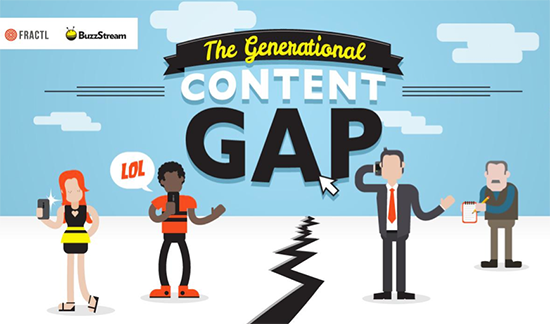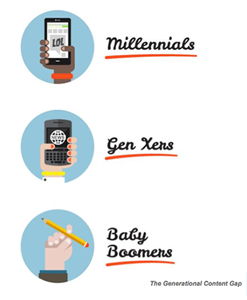
NEW YORK—Technology now impacts pretty much everyone’s life. But there are often distinct generational differences in how digital and social media posts are read, digested, liked and shared, depending on the group of the user. That’s something to keep in mind as you develop your practice and retail posts.
An interesting new joint study, by BuzzStream and Fractl, illustrates, via a free downloadable guide, what some of those content priorities can be. The two companies surveyed over 1,200 people about digital content consumption and then charted the major findings.
 The study is titled “The Generational Content Gap” and points to the fact that consumers today are tuning out many traditional marketing efforts in favor of channels that offer more valuable and relevant information. The study examined three groups: Millennials (born 1977–1995), Generation Xers (born 1965–1976), and Baby Boomers (born 1946–1964). The survey asked them to identify their preferences for over 15 different content types.
The study is titled “The Generational Content Gap” and points to the fact that consumers today are tuning out many traditional marketing efforts in favor of channels that offer more valuable and relevant information. The study examined three groups: Millennials (born 1977–1995), Generation Xers (born 1965–1976), and Baby Boomers (born 1946–1964). The survey asked them to identify their preferences for over 15 different content types.
One interesting finding: Baby Boomers prefer their content to be delivered during the week while Millennials save their content for the weekend; Gen Xers fall somewhere between the two. When asked about how much content they consume on the weekend, only 14 percent of Baby Boomers consume 50 percent or more of their content on Saturdays and Sundays compared with over 20 percent of Millennials.
Another key guideline: A headline can make or break a post. The survey found commonality among all the groups on this one: The research indicated that the headline’s wording is the most important factor for all three generations in determining whether or not they want to read your feature.
All three groups prefer to read good news over more depressing stories, which can be a cue as to how you word and title posts. Over 60 percent of each generation believe words such as “amazement,” “admiration,” and “joy” describe how they feel most often for the majority of the content they consume. Baby Boomers and Millennials share an affinity for news that elicits feelings of “surprise” and “amazement” while Gen Xers prefer content they can “admire” or “trust.”